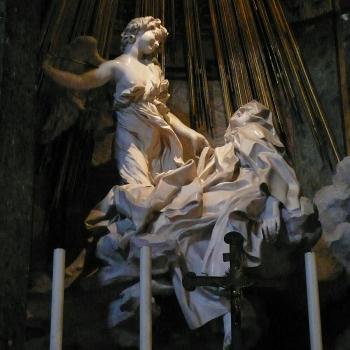So I’m in Sydney, and it’s amazing. Beautiful weather (and what I’m gonna call sublime weather, the day we went out to Botany Bay and watched the swells breaking on the sandstone in front of a stormy sky), lovely people, majestic cockatoos which sound like fishwives, magpies, aggressive little mynahs harassing giant ravens, ibises rooting around everywhere the way we have Canada geese at home, shaggy gum trees, palm trees, hibiscus.
And also, there’s the Hyde Park Barracks, which was designed by a convict architect and has been turned into a museum focusing on Sydney’s days as a penal colony. (Not sure if my making this museum my one tourist-attraction priority is more about me stereotyping Australia, or me being a self-parody at all times. YES LET’S GO TO THE PRISON MUSEUM, THAT SOUNDS FUN.) I don’t have a huge amount to say about it; if you’re ever in Sydney you absolutely should go. It’s an extremely moving experience. A very text-heavy museum, especially given that parts of it are clearly aimed at children (its mascot is a rat! and they give kids a map they can use to go through the museum finding all the rats, and if you “catch” them all you get a prize I think), but you know, it’s probably okay that kids will likely get distracted before they get to the wall captions about the development of surveillance to prevent prison sex.
Honestly, I found this museum so affecting. It brought home yet again how America hides away its prison culture. We’re pretty much the opposite of penal-colony Sydney, where you could see chain gangs in the streets and hear floggings–but where you could also have whole neighborhoods created by convicts as their second chance at making a good home. A place where people genuinely understood what you had been through: what you had done wrong, why you did it, and what you suffered for it.
Lots of powerful details: the page from a convict’s Bible, opened to the parable of the prodigal son; the little display about “chain migration,” explaining how people really would write back to their families in Britain to say, “It’s not so bad here! Try stealing something and see if you can join me!”; all the pipes people smoked; the lists of crimes for which you could be transported for life, which ranged from “stealing curled hair” to homicide. There’s an openness about how the powerful and moneyed interests often shape what’s considered a crime and what the punishment is. There’s a really amazing display with a flogging post and excerpts from descriptions of corporal punishment: a careful, restrained diary of punishment, which often counsels against excess but never quite reaches empathy.
The museum itself doesn’t share that defect. I’m pretty sure I’ve been to museums in America which glamorized criminals, but never a museum which empathized with prisoners. Hyde Park Barracks is basically on the side of the prisoners: a theological category (the status of “prisoner” is pretty important to Christian faith and practice) distinct from moral categories like guilt/innocence.










